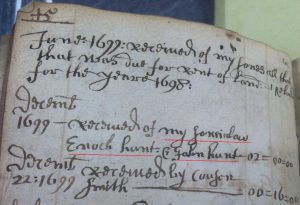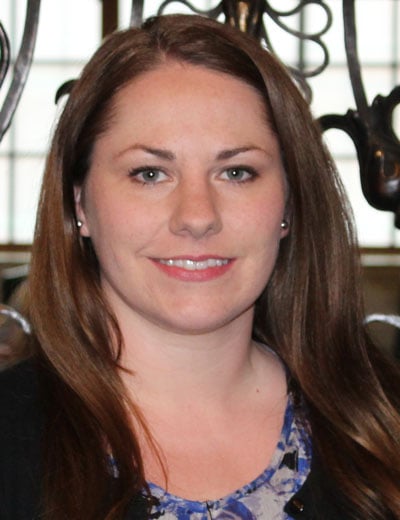 Typically, when researching family history, finding documents in which individuals state their relationship to each other is a source of excitement. These kinds of discoveries provide researchers with crucial information for genealogical research. However, during my time as a researcher here at NEHGS, I have come across some examples of direct statements of relationships that are not always what they appear to be. This insight specifically relates to colonial era documents, where relationships might be described differently than they are today.
Typically, when researching family history, finding documents in which individuals state their relationship to each other is a source of excitement. These kinds of discoveries provide researchers with crucial information for genealogical research. However, during my time as a researcher here at NEHGS, I have come across some examples of direct statements of relationships that are not always what they appear to be. This insight specifically relates to colonial era documents, where relationships might be described differently than they are today.
One example of this was a case I had that involved taking a look at one of our manuscript collections, The Account Book of James Blake, 1675–1754. My task for the case was to search this account book for any mention of the relatives of James Blake (1624–1700). I came across many notes relating to his sons, wife, and daughters, but what was interesting to me was that I also found a section that mentioned his three “sons-in-law,” John Hunt, Enoch Hunt, and Benjamin Hunt. It seemed improbable that James could have three sons-in-law with the same last name, especially since it appeared that he did not have three daughters.
In an effort to figure this out, I consulted one of our NEHGS databases, Torrey’s New England Marriages to 1700, to see if James Blake had a second marriage to anyone with the surname Hunt. It turns out this was indeed the case. Marriage records indicate that James Blake Sr. remarried after his first wife Elizabeth Clapp died in 1694. His second wife was Elizabeth Hunt. It would appear that John, Enoch, and Benjamin were her sons. Today we would refer to them as his “step-sons.” However, in the late seventeenth/early eighteenth century, the language used was somewhat different.
“In earlier times people often stated that an in-law connection existed when there was actually a step relationship. Any relationships created by legal means, including step relationships, were often identified simply as 'in-law.'"
In her book, The Researcher’s Guide to American Genealogy, Val D. Greenwood dedicated a small section to the “Evolution of the Language” which helped me to sort this out. She explains this difference in language by stating that “In earlier times people often stated that an in-law connection existed when there was actually a step relationship. Any relationships created by legal means, including step relationships, were often identified simply as 'in-law.'" It would make sense, then, that instead of calling Benjamin, Enoch, and John his sons or “step sons,” that he would call them “son-in-law’s.”
I have also come across many instances during this time period where what we would – in the present day – refer to as a “son-in-law” was simply referred to as a “son” – likewise with daughters who were of an in-law relationship. Greenwood also points out other cases of differences in language, including the fact that the titles Jr. and Sr. did not always mean father and son. It could simply refer to the fact that there were two people in a locality with the same name: one was Sr., the other Jr. I have of course come across instances of this where father and son were referred to as Jr. and Sr. as we do today. However, in some cases the Jr. and Sr. titles ceased when the Sr. passed away.
Another case where I found stated relationships to be different than suspected involved two “cousins” who were for some reason identified as siblings. In looking through probate records of a Coats family living in Newburyport, Massachusetts, I noticed discrepancies in a relationship I found identified there. According to Newburyport vital records, David Coats and Mehitable Thirston were married, had a child, and died in this town. Their daughter Elizabeth was also married in the town to a man named Thomas Greenleaf. In Mehitable’s will she stated her husband David had a nephew named Benjamin Coats. This nephew was given some money for his “advancement in life” in Mehitable’s will, since her husband David had died intestate the previous year.
Newburyport death and probate records indicated that Benjamin Coats was a mariner who died in the West Indies in 1793 at the young age of 22. He did not have a will, but I found a letter of administration for him which named Elizabeth Greenleaf administrator of his estate. What is odd about this case is that in these documents Elizabeth refers to Benjamin as her brother multiple times. However, in her will, Mehitable clearly indicates that Benjamin Coats was a nephew to her husband David, technically making Benjamin and Elizabeth cousins. It was unclear why Elizabeth referred to Benjamin as her brother, but perhaps she felt especially close to him.
These two examples serve to show that we cannot always take stated relationships at face value. We need to do our best to slip out of our modern day perspectives and find ways to view these historical documents through an alternate lens. Even if relationships appear to be clearly stated in the historical record, there may be instances where we may need to dig a little deeper to find additional supporting evidence when something doesn’t quite line up.
Sources:
- Account Book of James Blake, 1675–1754 (Mss C 2747), R. Stanton Avery Special Collections, New England Historic Genealogical Society.
- Torrey’s New England Marriages to 1700 <NEHGS database>.
- Val D. Greenwood, The Researchers Guide to American Genealogy, 3rd ed. (Baltimore: Genealogical Publishing Co., Inc., 2000), 37–39.
- Barbara J. Evans, A to Zax: A Comprehensive Dictionary for Genealogists and Historians, 3rd ed. (Alexandria, Va.: Hearthside Press, 1995).
- Paul Drake, What Did They Mean by That? A Dictionary of Historical Terms for Genealogists (Bowie, Md.: Heritage Books, 1994).
- Vital Records of Newburyport, Massachusetts, in Massachusetts Vital Records to 1850 <NEHGS>.
- Benjamin Coats death, 1792, Newburyport, Massachusetts; Massachusetts Vital Records to 1850 <NEHGS>.
- Administration records, Essex County, Massachusetts: Probate Records, Old Series vols. 362–64, Books 62–64, 1792–1797, vol. 362, 506, 522 (NEHGS Microfilm).
- Ibid., vol. 363, 57–59, 63 (NEHGS Microfilm).
- David Coats household, 1790 U.S. census, Newburyport, Essex Co., Massachusetts <Ancestry>.
Share this:

About Michelle Norris
Michelle holds a master’s degree in history from Salem State University, where she specialized in women in colonial New England. She completed her bachelor’s degree with concentrations in history and gender studies from the University of Massachusetts, Lowell. Michelle has a background in public history and has worked with the National Archives and Records Administration in Waltham, the Beverly Historical Society, and the Sargent House in Gloucester, Massachusetts. Her research interests include women’s history, society and culture, early America, and the American Revolution.View all posts by Michelle Norris →